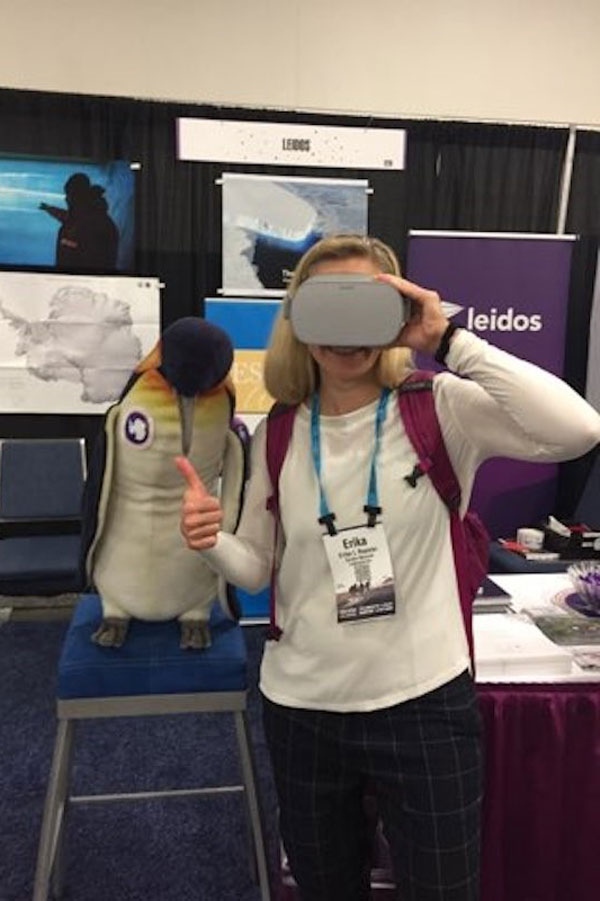Sandia atmospheric and climate scientist recognized by DOE STEM Rising site

Sandia atmospheric and climate scientist Erika Roesler has been recognized by DOE’s Women @ Energy: STEM Rising website, which honors women in STEM fields throughout the DOE complex.
Erika has been at Sandia for 10 years, where she began as a graduate intern. She graduated from the University of Michigan with a degree in Atmospheric Sciences. During her time at Sandia, Erika has worked in climate modeling, where her research seeks to understand how clouds may vary as a result of climate change.
At Sandia, Erika has grown immensely as a scientist and maintained active mentoring activities for undergraduate, graduate and early career STEM professionals. She also co-chairs a local elementary school science fair and presents polar-related science demonstrations and talks to their classrooms.
Erika was interviewed recently for her feature spot on the DOE Women @ Energy website.
Describe your current role at Sandia. What is the main purpose and mission of your work?
I am an atmospheric and climate scientist at Sandia. My work’s main purpose is to improve the understanding of the Earth’s climate under changing conditions. My primary focus is on cloud processes. I am fortunate to be able to work with the excellent people at Sandia National Labs and the broader DOE lab complex to apply state-of-the-art technology like sensors, climate models, software, algorithms and unmanned systems to climate change problems.
What inspired you to work in STEM?
Growing up, I enjoyed computers, math, writing, reading and especially nature. I knew I wanted to work in a field where I could try to make a difference to improve lives and our planet. Physics and atmospheric science were the perfect fit for me.
Along the way, I discovered I like technology, and I like trying to apply new techniques to old problems. For instance, right now, I am on a project that will use virtual reality to analyze clouds simulated by massive supercomputers. The viewing of clouds in an evolving three-dimensional space is something only birds and pilots have been able to do. This technology might lower the bar for accessibility and allow more users to understand remote, inaccessible natural processes.
What excites you about your work?
I am excited about the vision of Sandia’s Energy program, and how science-based actions can improve humanity’s livelihood and outcome. The focused perspective on trying to understand changes to clouds through climate change motivates and innovates my work.
How can our country engage more women, girls and other underrepresented groups in STEM?
I think our country can engage more women, girls and other underrepresented groups in STEM by making safe, natural, outdoor spaces more accessible. Experiencing nature in a safe way has inspired me to enter this field.
Do you have tips you’d recommend for someone looking to enter your field of work?
To enter this field of work, I would recommend diving into nature. Find what fascinates you, then ask questions and find answers. Remember, your journey is not a rapid sprint; you can backtrack and reset. Take your time to find the rhythm of the ebbs and flows to get where you want.
When you have free time, what are your hobbies?
I like to run, ski, scrapbook and watch comedies. I love to play with my kids.